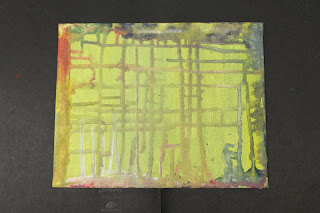





Walking through the Jesus Rafael Soto exhibit. Interacting with this sculpture
caused your sense to feel as if you were in tubes of rain that you could move around.

Here is one of the most important reasons why students write about their art that
they choose to have in the art museum. Label copy is how the artist can tell a little
story about how, when and why the work was made.

Standing under Tony Smith's "Smoke". The sculpture completely encompasses the large room of the Ahmanson Building.

Viewing Art of the Ancient Pacific Islands.

Ancient Buddhist sculpture

Louise Nevelson sculpture

The LACMA trip also gives students a chance to practice their art skills. Sketching the work in the museum is important to help connect what is being done in the class with
the important art from our history.

Alberto Giacometti room

Pablo Picasso sculpture

Experiencing the Bruce Nauman video

Discovering ancient sarcophagus

Egyptian art

Paintings during the Renaissance























































